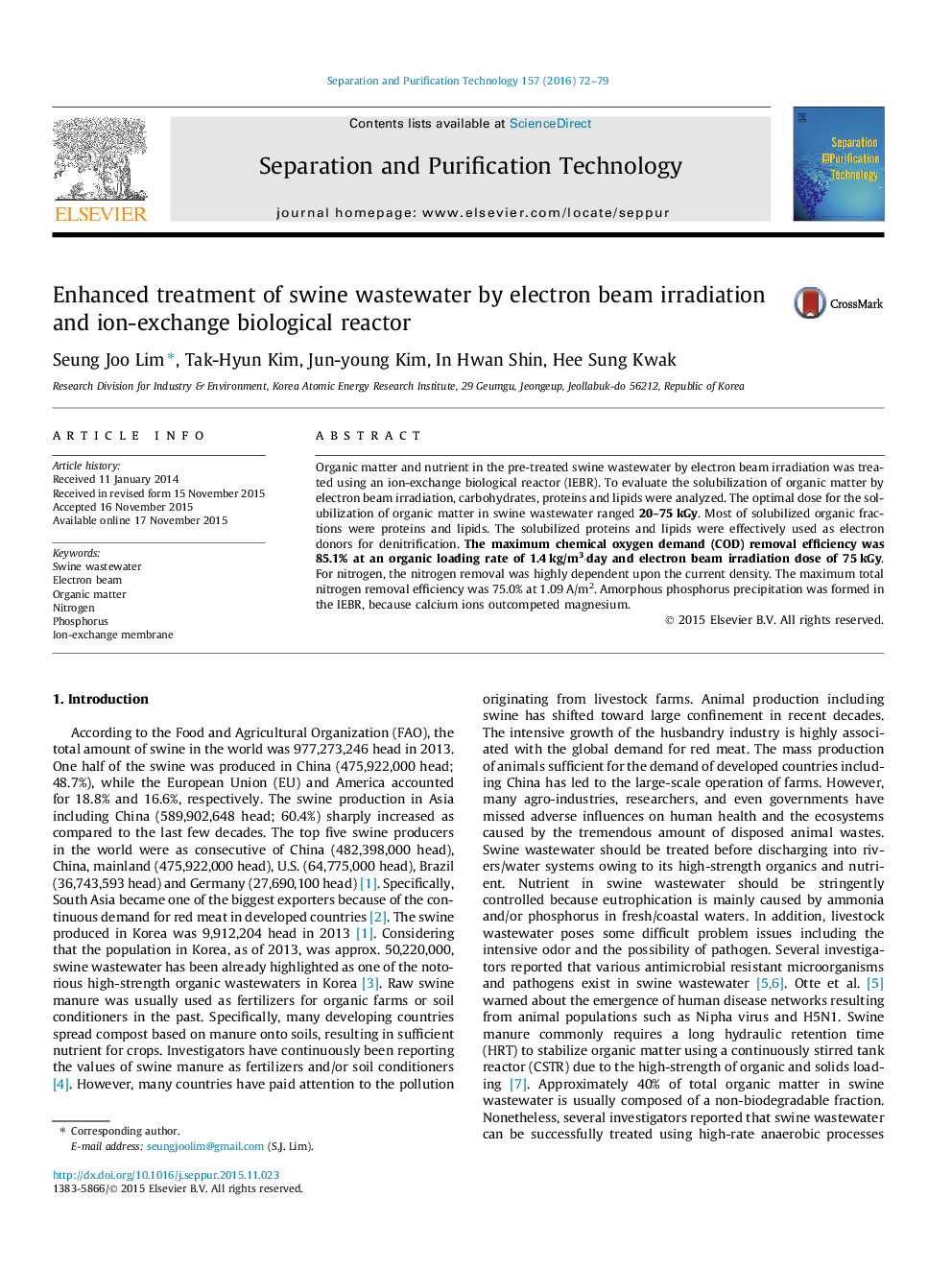| Article ID | Journal | Published Year | Pages | File Type |
|---|---|---|---|---|
| 640246 | Separation and Purification Technology | 2016 | 8 Pages |
•Swine wastewater was solububilized at applied doses of 20–75 kGy.•Organic matter removal in swine wastewater is a function of the solubiliztion.•The current density was a key factor to remove nitrogen in the IEBR.•Amorphous crystals were formed because of the competition of calcium ions.
Organic matter and nutrient in the pre-treated swine wastewater by electron beam irradiation was treated using an ion-exchange biological reactor (IEBR). To evaluate the solubilization of organic matter by electron beam irradiation, carbohydrates, proteins and lipids were analyzed. The optimal dose for the solubilization of organic matter in swine wastewater ranged 20–75 kGy. Most of solubilized organic fractions were proteins and lipids. The solubilized proteins and lipids were effectively used as electron donors for denitrification. The maximum chemical oxygen demand (COD) removal efficiency was 85.1% at an organic loading rate of 1.4 kg/m3·day and electron beam irradiation dose of 75 kGy. For nitrogen, the nitrogen removal was highly dependent upon the current density. The maximum total nitrogen removal efficiency was 75.0% at 1.09 A/m2. Amorphous phosphorus precipitation was formed in the IEBR, because calcium ions outcompeted magnesium.
